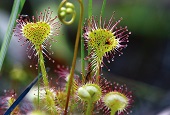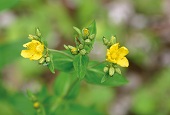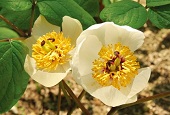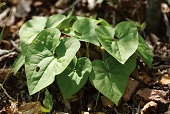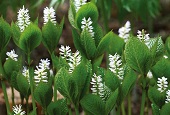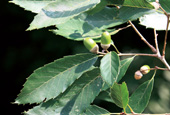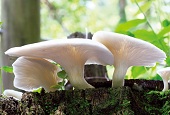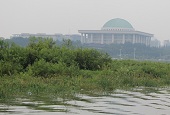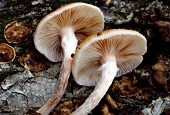View this article in another language
- 한국어
- English
- 日本語
- 中文
- العربية
- Español
- Français
- Deutsch
- Pусский
- Tiếng Việt
- Indonesian
Flora & Fauna of Korea #42
Korea.net publishes a series of articles, “Nature You Meet in the Mountains,” about the peninsula’s mushrooms, insects, trees and herbs & flowers.
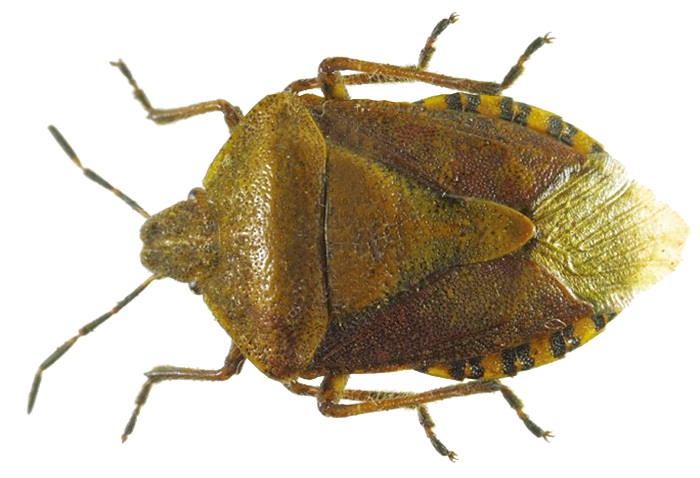
Insects
Name: 홍보라노린재 Hongboranorinjae
Scientific name: Carpocoris purpureipennis (de Geer)
Distribution: Korea, Japan and parts of Europe
This stick bug, also known as a shield bug, is about 12 to 15 millimeters long. The body is reddish brown or yellowish brown. There are black colors along the sides of the head. The antenna are divided into five segments, the first of which is light brown while the rest of them are black. The first segment is the shortest in length and the third segment is the next shortest one. Both sides of the frontal thorax seem to be sharp and angular. The outer layers of the wings stretch to the end of the abdomen. The color is light brown. The frontal edges are dark. The underside of the body is light green or greenish brown.
Ecology: Adult specimens have been observed between May and August.
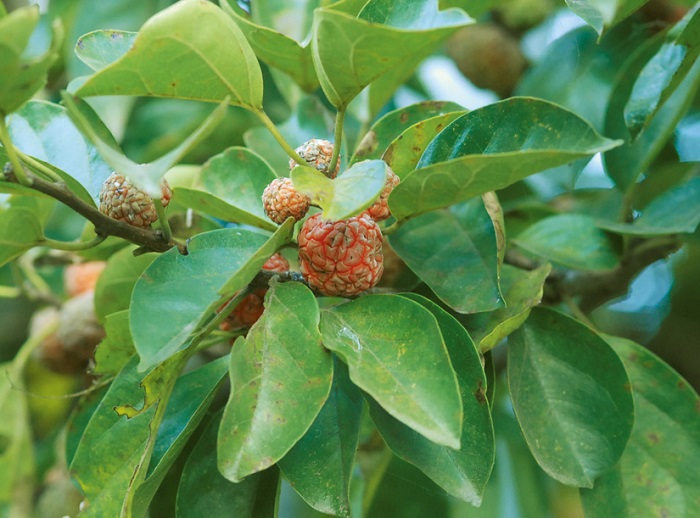
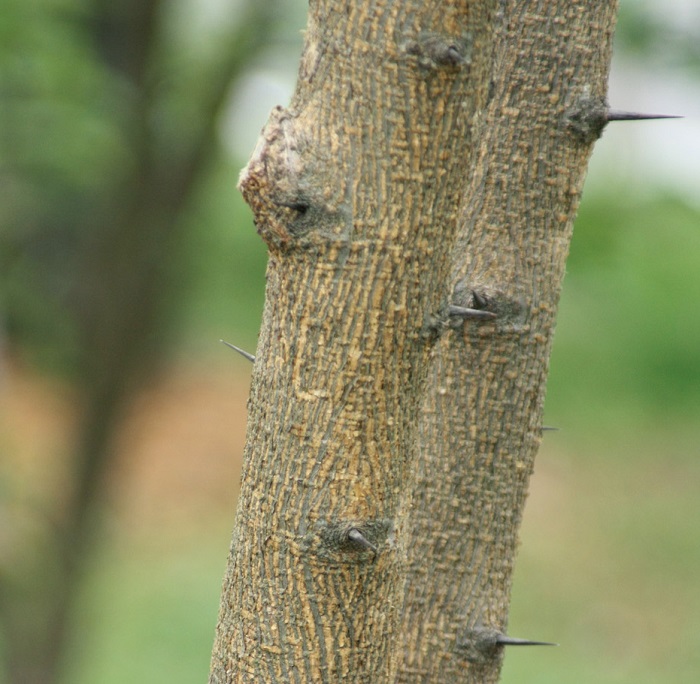
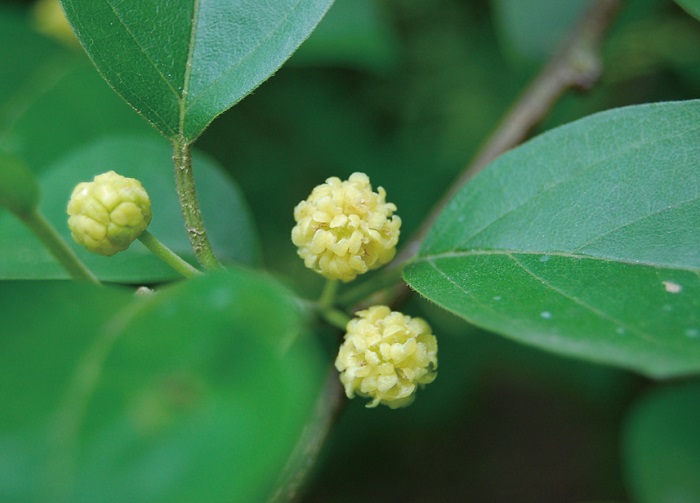
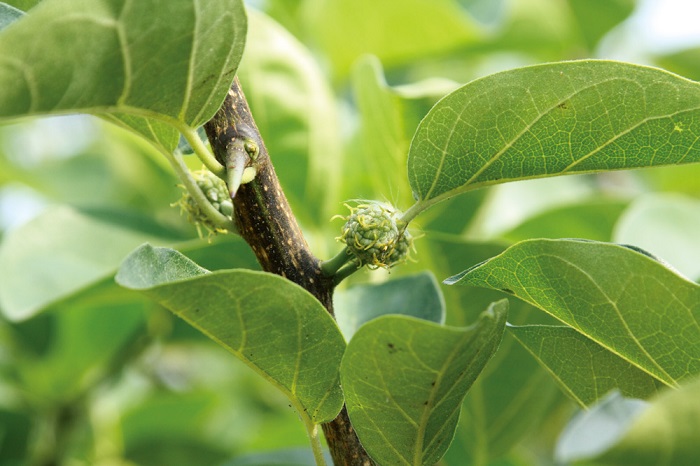
Trees
Name: 꾸지뽕나무 Kkujibbongnamu
Scientific name: Cudrania tricuspidata (Carr.) Bureau ex Lavallee
Type: deciduous broadleaf shrub/ tall tree
Blooming season: May to June
Bearing season: September to October
Distribution: Along the west coast and western parts of the southern coast
This tree is normally found in coastal areas. Thorns are found on the branches and are covered in hairs. The leaves can be separated into three parts. It's oval-shaped, either obtuse or acute. The underside is covered in small hairs. It gives bloom to dioecious flowers. The male flowers are round and yellow while the female flowers are oval-shaped. It bears aggregate fruits, which normally are round, soft and reddish. The achene fruits are black.
The fruits are edible and enjoyed by many people, and the bark and roots are used for medicinal purpose and to make paper.
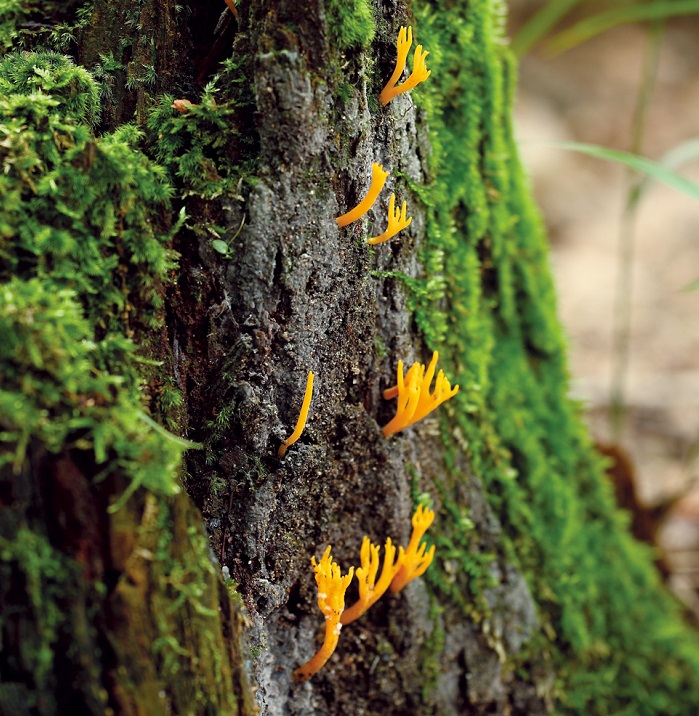
Mushrooms
Name: 아교뿔버섯, Agyobbulbeoseot
Scientific name: Calocera viscosa (Pers.) Fr.
Type: saprophile spore
Print: yellowish brown
Inedible
This mushroom grows alone or from the stumps of dead and fallen trees with needles. The fruit body is about 2.5 to 5 centimeters long. It resembles a coral and is medium to deep orangy yellow. The whole body is covered in hymenium, a layer of cells that produces spores. The tip of the body is conical, about 0.5 to 2 millimeters long and the texture is very flexible.
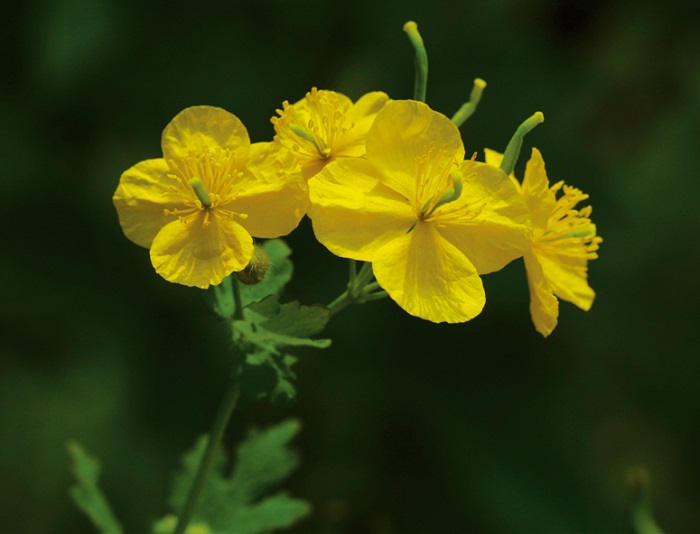
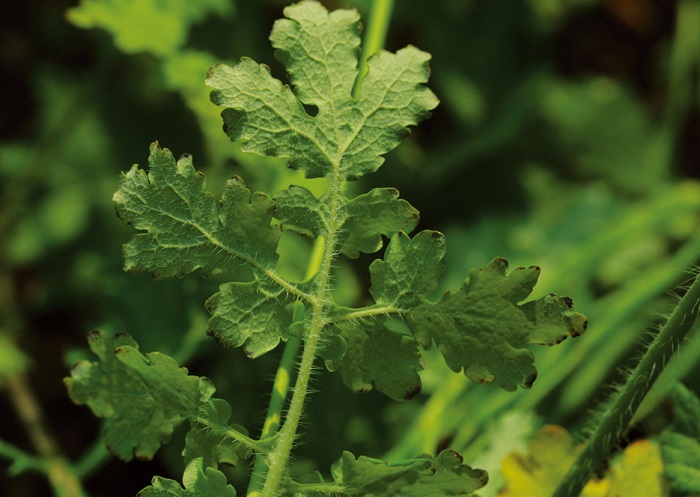
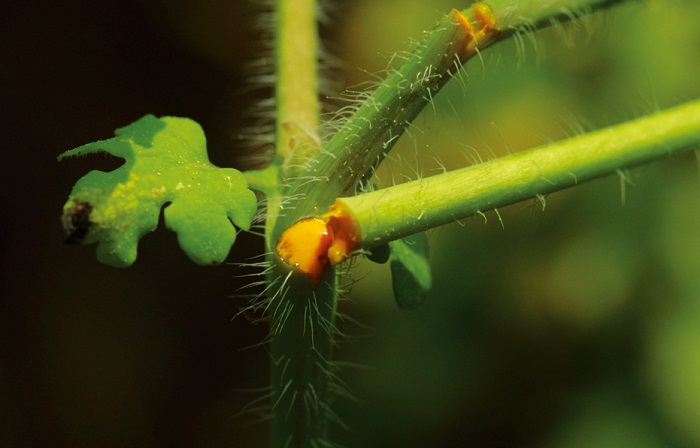
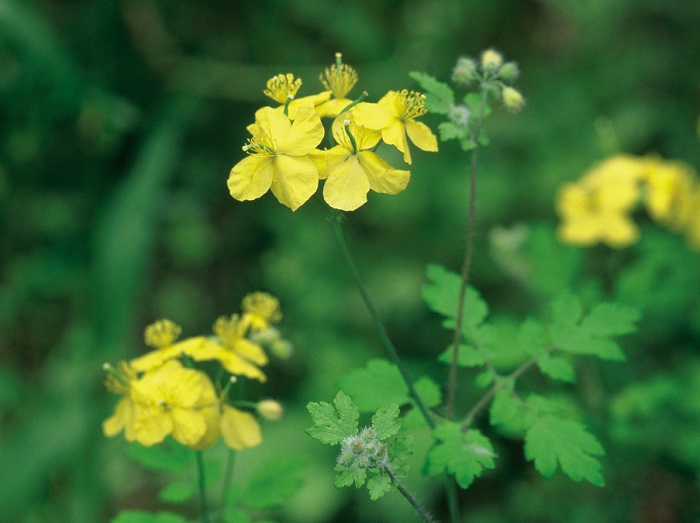
Herbs & Flowers
Name: 애기똥풀, 까치다리, Aegiddongpul
Scientific name: Chelidonium majus var. asiaticum H. (Hara) Ohwi
Blooming season: May to August
Distribution: mountains nationwide
This biennial plant grows 30 to 50 centimeters high, normally in sunny areas in the forests and on unoccupied land. The plant continues to branch out, and the branches are the same color of white as the leaves. The whole branch is covered in long and soft hairs. The leaves are alternating and can be separated into two parts. The flowers are yellow and have four petals. It bears capsule fruits with black seeds, long and oval, and about 3 to 4 centimeters long.
*This series of article about Korea’s insects, trees, mushrooms and herbs & flowers has been made possible through the cooperation of the Korea National Arboretum.
Korea.net publishes a series of articles, “Nature You Meet in the Mountains,” about the peninsula’s mushrooms, insects, trees and herbs & flowers.

Insects
Name: 홍보라노린재 Hongboranorinjae
Scientific name: Carpocoris purpureipennis (de Geer)
Distribution: Korea, Japan and parts of Europe
This stick bug, also known as a shield bug, is about 12 to 15 millimeters long. The body is reddish brown or yellowish brown. There are black colors along the sides of the head. The antenna are divided into five segments, the first of which is light brown while the rest of them are black. The first segment is the shortest in length and the third segment is the next shortest one. Both sides of the frontal thorax seem to be sharp and angular. The outer layers of the wings stretch to the end of the abdomen. The color is light brown. The frontal edges are dark. The underside of the body is light green or greenish brown.
Ecology: Adult specimens have been observed between May and August.




Trees
Name: 꾸지뽕나무 Kkujibbongnamu
Scientific name: Cudrania tricuspidata (Carr.) Bureau ex Lavallee
Type: deciduous broadleaf shrub/ tall tree
Blooming season: May to June
Bearing season: September to October
Distribution: Along the west coast and western parts of the southern coast
This tree is normally found in coastal areas. Thorns are found on the branches and are covered in hairs. The leaves can be separated into three parts. It's oval-shaped, either obtuse or acute. The underside is covered in small hairs. It gives bloom to dioecious flowers. The male flowers are round and yellow while the female flowers are oval-shaped. It bears aggregate fruits, which normally are round, soft and reddish. The achene fruits are black.
The fruits are edible and enjoyed by many people, and the bark and roots are used for medicinal purpose and to make paper.

Mushrooms
Name: 아교뿔버섯, Agyobbulbeoseot
Scientific name: Calocera viscosa (Pers.) Fr.
Type: saprophile spore
Print: yellowish brown
Inedible
This mushroom grows alone or from the stumps of dead and fallen trees with needles. The fruit body is about 2.5 to 5 centimeters long. It resembles a coral and is medium to deep orangy yellow. The whole body is covered in hymenium, a layer of cells that produces spores. The tip of the body is conical, about 0.5 to 2 millimeters long and the texture is very flexible.




Herbs & Flowers
Name: 애기똥풀, 까치다리, Aegiddongpul
Scientific name: Chelidonium majus var. asiaticum H. (Hara) Ohwi
Blooming season: May to August
Distribution: mountains nationwide
This biennial plant grows 30 to 50 centimeters high, normally in sunny areas in the forests and on unoccupied land. The plant continues to branch out, and the branches are the same color of white as the leaves. The whole branch is covered in long and soft hairs. The leaves are alternating and can be separated into two parts. The flowers are yellow and have four petals. It bears capsule fruits with black seeds, long and oval, and about 3 to 4 centimeters long.
*This series of article about Korea’s insects, trees, mushrooms and herbs & flowers has been made possible through the cooperation of the Korea National Arboretum.
